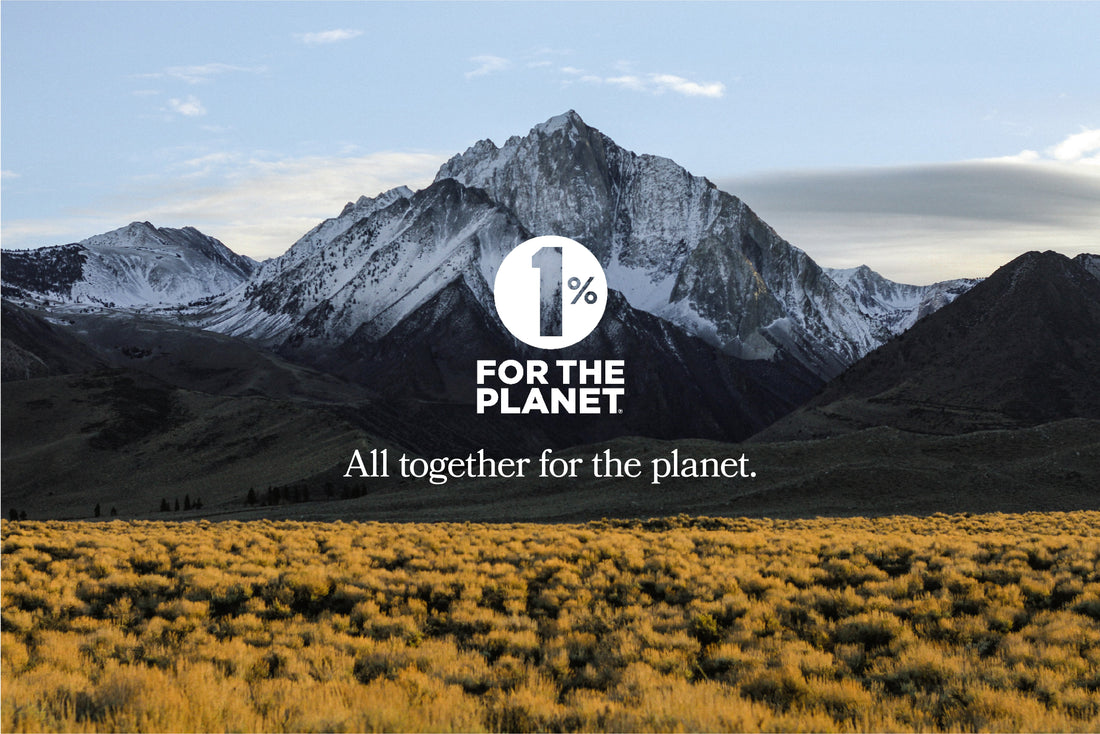When you choose a bag of our Human Nature snacks, you’re doing more than grabbing a tasty treat. You’re helping to fund projects around the world that protect forests, clean up waterways, and support wildlife.
As a member of 1% for the Planet, we commit at least one percent of our yearly sales to a shared fund.
What It Means to Be a 1% for the Planet Member
1% for the Planet is a simple idea: businesses pledge to give at least one percent of their annual sales to environmental causes. Behind that promise is a careful process:
-
Vetted Nonprofits Only
Before any organization can receive money, 1% for the Planet checks that they have clear goals, proven results, and responsible finances. This ensures every project we help is run by people who know how to get things done. -
Regular, Transparent Giving
Each year, we look at our total sales and send one percent into a common pool called the Planet Impact Fund. As our sales grow, the amount we give grows too. We also share simple public updates so you can see which areas received support and how that made a difference. -
Collective Impact
By combining donations from many member businesses, 1% for the Planet can fund larger or longer-term efforts than any single company could manage alone. This teamwork helps local groups work together on shared goals.
In short, when you see the 1% for the Planet logo on Human Nature, it means a portion of what you pay for snacks goes straight to well-run projects that protect nature and strengthen communities.
The Six Focus Areas
1% for the Planet divides its giving into six main areas. Human Nature’s support helps projects in each category, reflecting our own promise to treat people and the planet with care.
-
Climate
Projects here work to reduce greenhouse gases or capture carbon from the air. For example, planting forests that soak up carbon or helping communities switch to cleaner energy sources. -
Food
This area focuses on earth-friendly ways to grow food. Projects might teach small farms to use fewer chemicals, save water, or restore healthy soil—ideas that connect with how we source peas and lentils. -
Land
Projects under “Land” protect and restore forests, grasslands, and other natural spaces. That can mean replanting native trees, stopping deforestation, or helping locals manage land more carefully. -
Pollution
Pollution projects tackle litter, plastic waste, and harmful chemicals in soil or water. Volunteers might organize simple cleanups, or nonprofits could develop local recycling programs to keep waste out of rivers. -
Water
These efforts make sure people and wildlife have access to clean water. That can mean restoring wetlands that naturally filter water, building small water-treatment systems in villages, or protecting rivers from pollution. -
Wildlife
This area covers saving endangered animals, protecting habitats, and stopping illegal hunting. It often involves working with local communities to find ways for people and wildlife to live in balance.
By supporting projects in all six focus areas, Human Nature’s 1% for the Planet membership helps forests, farms, wildlife, and water sources thrive together.

How Human Nature’s Membership Fits Our Values
Behind every bag of Human Nature snacks is a simple philosophy: People Before Profit and Hand-Picked from Nature. Here’s how joining 1% for the Planet aligns with those ideas:
-
Putting People First
Joining 1% for the Planet means we also invest in communities that protect nature and create green jobs—whether it’s a nursery worker in one country or a park ranger in another. -
Hand-Picking Trusted Projects
Just as we choose the best, naturally grown ingredients for our snacks, we carefully select environmental projects that have clear results. 1% for the Planet vets each organization, so we know our support goes to groups making real progress. -
Strengthening Local Economies
The projects we fund often hire locals, teaching them skills in nursery work, tree planting, or wildlife monitoring. This creates new opportunities in places that may have struggled economically, giving people a clear reason to keep their environment healthy. -
Working Together for Bigger Impact
On our own, we might do a few local activities. But by joining a global network of businesses, our small contribution multiplies. Collectively, member companies help fund efforts that restore thousands of acres of forest or clean up entire waterways.
Every snack purchase at Human Nature helps push that fund a little higher—so we can keep supporting these projects and help more people, land, and wildlife.
What This Means for You
When you pick up a pack of Human Nature snacks, you’re sending part of your money toward:
-
Reforesting Hillsides and restoring healthy soils.
-
Protecting Mangroves that shield coastal communities and support fisheries.
-
Supporting Agroforestry where farmers learn to grow crops under native trees.
-
Helping Wildlife Corridors so animals can move safely between forest patches.
-
Backing Park Rangers who guard precious habitats and keep them free of pollution.
You can enjoy your snacks knowing you’ve also helped protect nature and strengthen local communities.

Conclusion
Choosing a bag of Human Nature snacks means you’re part of something bigger. You’re helping fund real, hands-on work that restores forests, protects wildlife, and cleans up waterways around the world. From managing forests in East Africa to helping farmers in South America, from supporting green jobs in Central America to protecting unique species in Madagascar—your snack dollars support people who care for the planet every day.
So next time you reach for a pack of Human Nature, remember: you’re not just enjoying a delicious, plant-based treat. You’re helping fuel real, lasting change—one project and one community at a time. Thanks for snacking with purpose and for making 1% truly count.

